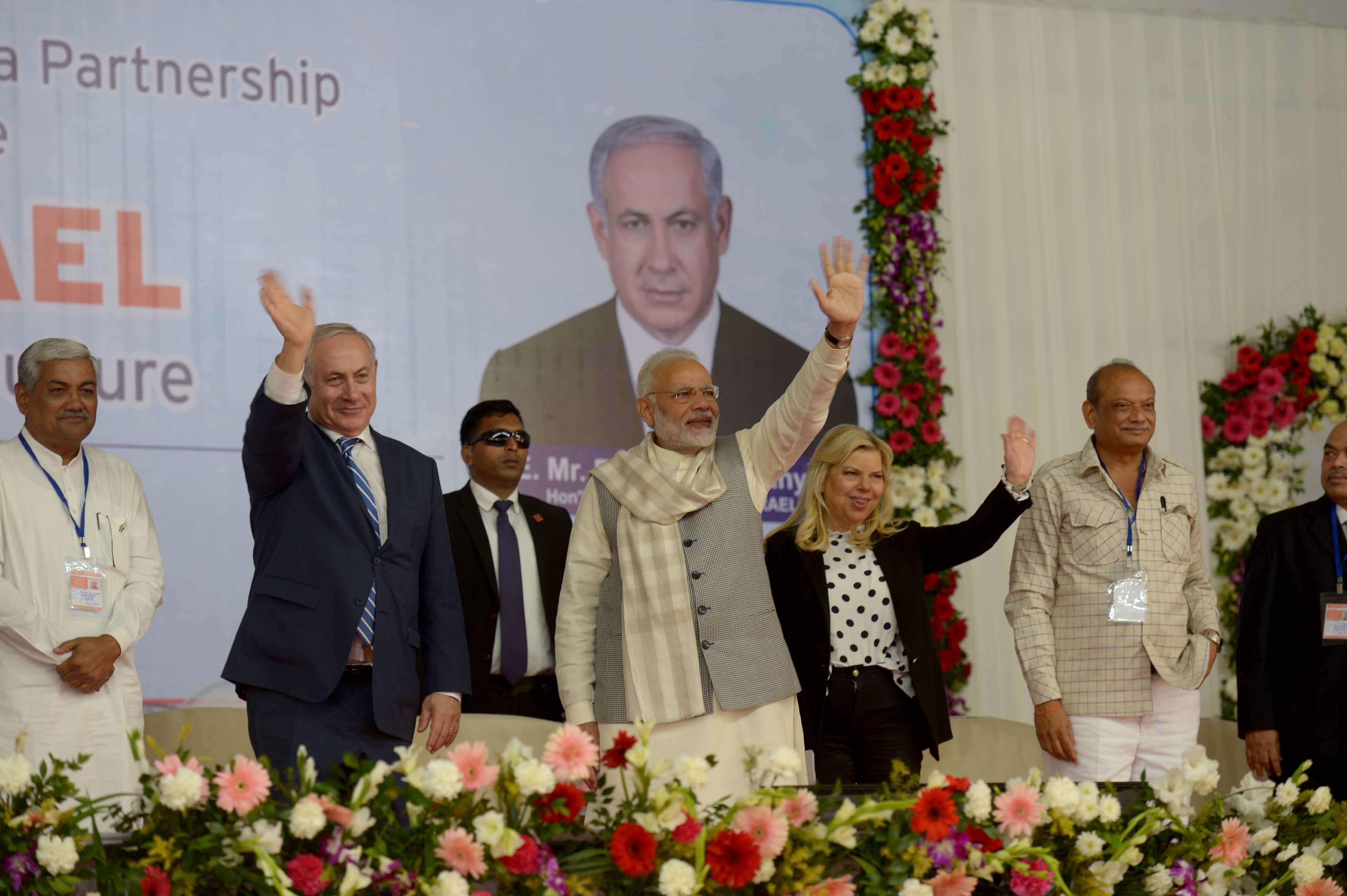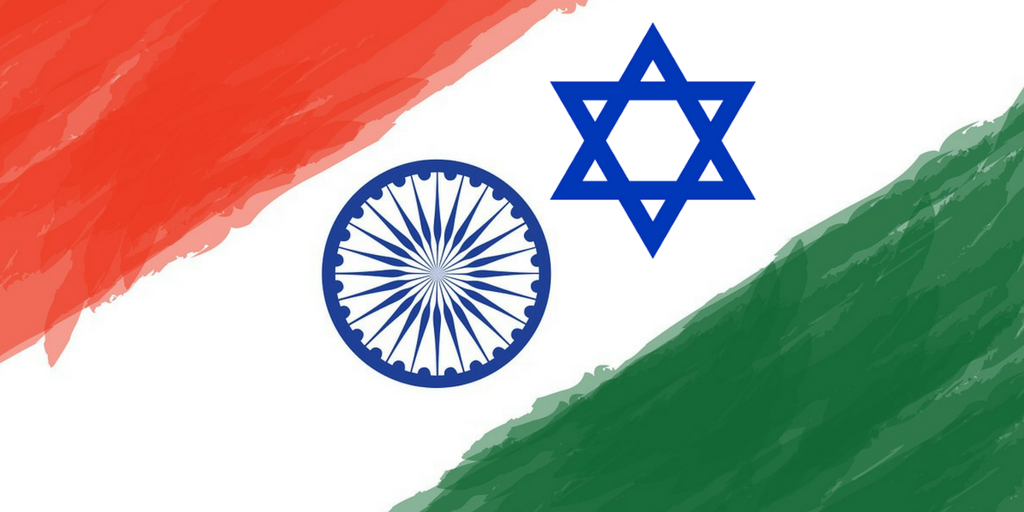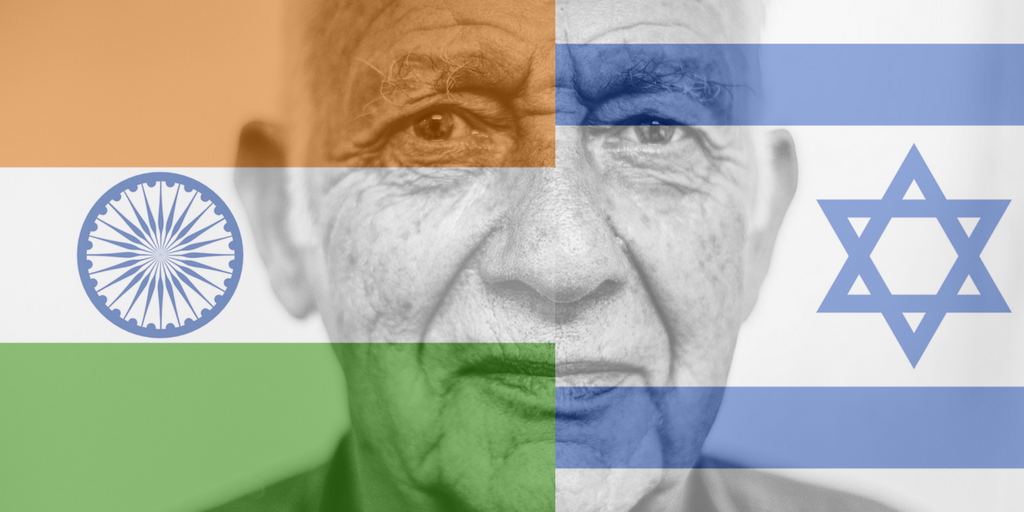It was the BJP government back in 2003 when former Israeli Prime Minister Ariel Sharon paid his last visit to New Delhi. Since then, there has been a lull period in Indo-Israeli relationship. Again, the ice was broken by a BJP led government in 2014. Today, after 15 long years, India is warmly welcoming Israeli Prime Minister, Mr. Benjamin Netanyahu on hid 6 days historic visit with First Lady Mrs. Sara Netanyahu and a powerful delegation.
The warm welcome by Indian Prime Minister Narendra Modi to Mr. Benjamin Netanyahu was more than a mere reciprocation what Mr. Modi received on his recent historic visit to Israel. Salute from India to Israel was display of deep bonding and an excellent camaraderie that these two leaders share between them. Whenever, we see the two leaders together, their body language speaks volumes of a relationship that has risen over diplomacy and mutual interests.
 There have been many adjectives used to describe the Indo-Israeli relationship. Many recent ones were taunting and funny. The questions were: Is it a one night stand or a long term relationship? Is it flirting, mutual interest or common enemies? So many questions were asked especially in the backdrop of India’s UNGA vote and the Spike ATGM deal.
There have been many adjectives used to describe the Indo-Israeli relationship. Many recent ones were taunting and funny. The questions were: Is it a one night stand or a long term relationship? Is it flirting, mutual interest or common enemies? So many questions were asked especially in the backdrop of India’s UNGA vote and the Spike ATGM deal.
As soon as the news of India’s UNGA vote spread, there was an unprecedented but a very heartening outcry on social media and otherwise too. Many Nationalists and Social Media users, Independent activists and experts stormed in support of Israel. There were banners by many Hindu Nationalists which read “Country – Israel , Capital – Jerusalem. This was not a symbolic gesture. It appeared to exemplify deep bonds that has developed between the people of both countries, more so in recent times. Bond that knows no compulsions, and is driven by a strong sense of belonging with each other.
India-Israel relationship is not about commercials, cosmetics or optics. The bond that has developed so largely, comes from “Destiny”. Both countries are lead by destiny and even if, we still have not totally come to terms with this unexplored fact, the signs of this belief in ‘destiny’ growing has immense potential and well, on course. It was destiny when around a 100 years ago, Haifa found a new hero in Major Dalpat Singh.
No matter how unbelievable it may sound to a rationalist mind the historical facts would keep singing this tale of valour of how a modern army weilding machine guns were run over by heroes weilding swords and lancers. This valour is still seen in our modern day defence personnel who may have a little handicap on the modern weaponary that they require but their motivation is so tall that it dwarfs such temporary handicaps.
In the India-China war in 1962, it was Israel that had helped us with 81 mm and 120 mm mortars, howitzer artillery guns with ammunition that we desperately needed. In the 1971 Indo-Pak war, Israel delayed sending back the Pakistani F-86 Sabre aircraft that were sent to Israel for maintenance. Not to forget the help Israel offered in bombing Kahuta Nuclear facility located in Pakistan in the year 1981. An indecision, that to me was the biggest blunder that lead Pakistan to flourish as Nuclear Monster that now threatens to be the hub of a Global Nuclear Catastrophe.
The modern Indo-Israel realtionship has grown from such amazing historical events and has evolved into an ever flourishing relationship that has been written by destiny itself. The future of this relationship is going to be space high. India and Israel can together bring in big breakthroughs in every field be it Space Technology, Trade and Commerce, Defence and Aerospace, Farming, Medicine and the most important of them all have been pioneers in leading the world in maintaining world peace and prosperity.
 As of now there is a difference between the work cultures of both the countries and that to me is a temporary hindrance and a gift of the lackadaisical approach of the previous regimes in strengthening our functionary processes. However, with the current ruling NDA government lead by Prime Minister Shri. Narendra Modi, there is a sea of constructive reforms taking place, which has been evident to the world more as demonetisation and GST. These are the more talked about issues but there are 100s and 1000s of other such big and small steps taken by the government to evolve a work culture that is performace and deliverables driven sans any red-tapism.
As of now there is a difference between the work cultures of both the countries and that to me is a temporary hindrance and a gift of the lackadaisical approach of the previous regimes in strengthening our functionary processes. However, with the current ruling NDA government lead by Prime Minister Shri. Narendra Modi, there is a sea of constructive reforms taking place, which has been evident to the world more as demonetisation and GST. These are the more talked about issues but there are 100s and 1000s of other such big and small steps taken by the government to evolve a work culture that is performace and deliverables driven sans any red-tapism.
However, one would like to see this relationship, from whichever spectrum deemed fit but to my eyes I see India and Israel in each others destiny and in time not just the people of both the countires but the entire world will start seeing the same.
Vande Mataram.
Originally Published in Wise Indian Tongue
























